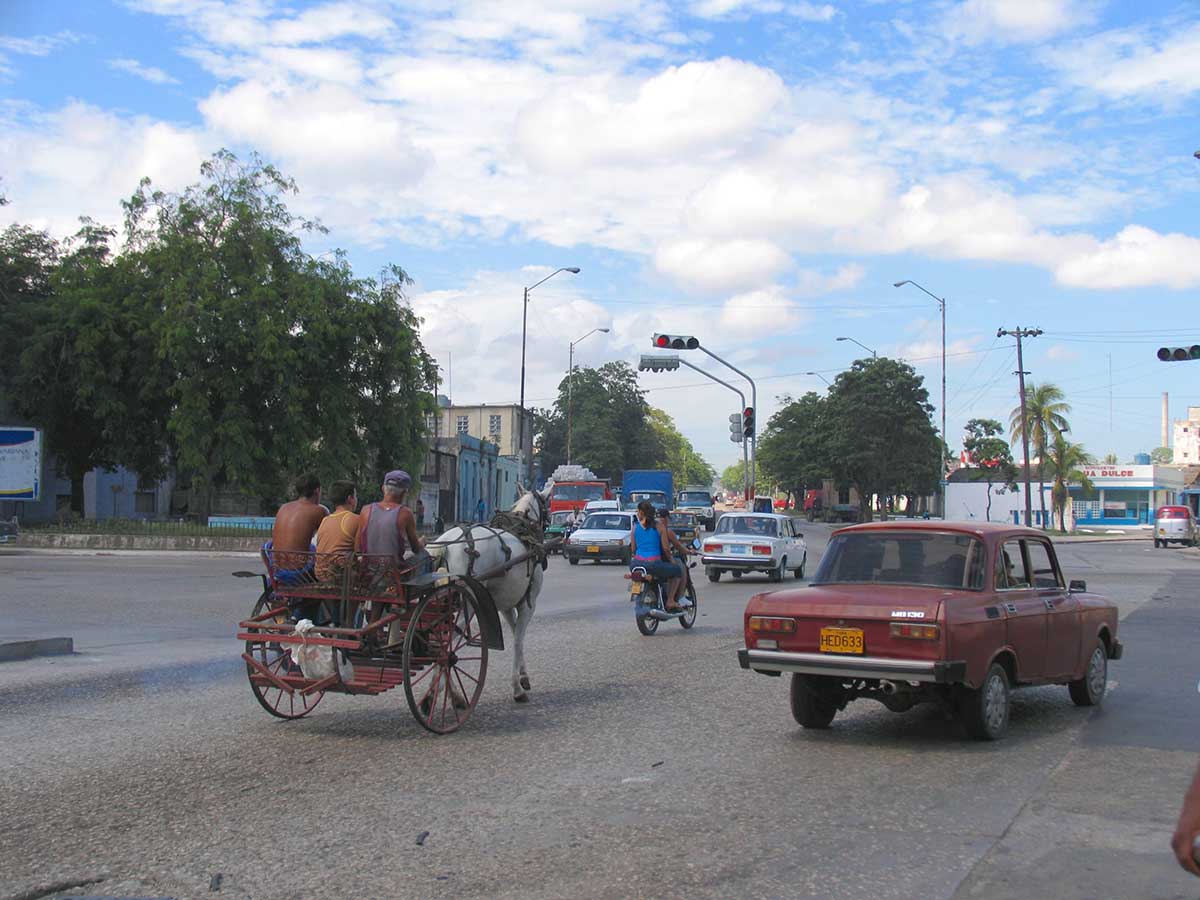With the rise of Hugo Chávez’s “Bolivarian Revolution” in Venezuela, Cuban leaders again privately traded certain secret services in exchange for access to cheap oil and gas. As a result, Havana’s streets, while never a site of “traffic jams”, began to show the multiple classes of users whose access to any form of independent transportation reflected a past political relationship to the Communist state. Soviet-made Ladas (like the one shown on the right) went to society’s strategic professionals like doctors; informants and agents of the Ministry of the Interior; and others whose political loyalties needed reward in the 1970s and early 80s when they were “sold”. Motorcycles were also a mark of political status and ideological prestige for years, although illegal sales by owners in the 1990s (until the recent legalization of private sales) “democratized” access. This photograph also features peasants who held on to a Cuban version of the coach manufactured before 1959 and known as la araña [the spider] and who also managed to retain or regain ownership of a horse. Araña drivers rallied back in the 1990s as former bans or limitations on horse-drawn vehicles disappeared with urgent national needs. Finally, state-owned yellow and black collective taxi cabs, often critically called avispas [wasps] continued to offer fixed-rate (if high) fees for citizens based on regular taxi routes throughout the capital city that were established as early as the 1920s with the first motorized vehicles and trollies. These cabs have disappeared in recent years but their routes, until the early 2010s, extended far throughout the city, reaching sites like the Hospital of the Anti-Blindness League of Cuba, the very best and only ophthalmological institute in the country from its founding long before 1959 to the present.
